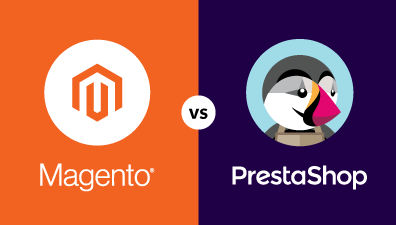Of the many decisions, you make to drive success for your online business, choosing the most optimal platform is of the utmost importance. The eCommerce platform needs to contain all the functionalities and features that serve your business’s goal. There are two big names that are no doubt cropping up: OpenCart vs Magento.
According to Ahrefs statistics, the global search volume of OpenCart vs Magento is 159,000 and 302,000 correspondingly. These numbers mean that merchants are much interested in the two platforms. Moreover, they tend to take a greater interest in Magento.
The following article will compare and explain where and how Magento goes miles ahead of OpenCart in terms of both functionalities and performance.
Table of Contents
OpenCart vs Magento: Overview
What is Magento?
Released in 2008, Magento is an open-source eCommerce platform written in the PHP language. Magento represents around 8% of all eCommerce platforms available on the market, with more than 447,100 live websites and numerous Magento-certified developers.
It offers three editions. One is Magento Open Source, (previously Magento Community Edition). The second is Magento Commerce (previously Magento Enterprise Edition). And third is Magento Commerce Cloud Edition, which is a fairly new entry into the Magento platform.

Magento Commerce was derived from Magento Open Source and has the same core files. However, Magento Commerce has a bunch of advanced features and functionalities, exclusively for large companies. To have an in-depth look at the differences between Magento Open Source and Magento Commerce, you can refer to this article.
Pros
- Optimal scalability: Scalability ranks as the top benefit of Magento, freeing eCommerce business owners from the fear of a slow and poorly performing website. Whether your stores are selling thousands of SKUs, Magento sites still perform well without any major performance tuning.
- Feature-rich: Magento offers a wide range of out-of-the-box features, making it a powerful solution for business efficiency. Some notable features include advanced product catalog management, customizable checkout, multiple payment and shipping options, advanced inventory management, and more.
- Customization: Being an open-source platform, Magento provides extensive customization options. You’ll have the flexibility to modify the code, customize templates, or integrate with third-party applications to create a unique and tailored online store that matches your brand’s identity and best optimize your store performance.
- Strong SEO capabilities: Magento comes with built-in SEO features that help boost your ranking in SERP, including structured data, custom URL structures, metadata, URL rewrites, and built-in support for sitemap and robots.txt files.
- Community and support: Magento has a large community of developers, designers, and users, allowing you to find immediate support and solutions to any problem with your sites. Resources and quality integrations are also available in the Magento community.
Cons
- Cost: Magento is among the most expensive solutions when compared to other eCommerce platforms. Even for Magento Open Source, whose entry cost is free, you still need a decent budget for custom development, ongoing support and maintenance, integrations, and extensions. For the Enterprise edition, the expenses even grow higher because of the licensing costs.
- Steep learning curve: Magento is a highly complex platform that even skilled developers might get confused with. Businesses lacking technical expertise may find it challenging to build a Magento store. The cost for external support or Magento development services might be required.
- Resource-intensive: Because of its rich features and scalability, Magento is a resource-intensive platform in terms of server requirements and performance optimization. Its customization process is usually time-consuming. It also requires a powerful hosting server, such as VPS or a dedicated one, which can be a huge pain in the neck for businesses with budget-constrained.
What is OpenCart?
OpenCart is a popular open-source online store management program. The first OpenCart public release was in 1999. This software is developed in the PHP programming language with MySQL database and HTML components, which is quite similar to Magento.

OpenCart has recently released OpenCart Cloud, a cloud-based version of an eCommerce solution hosted on Amazon Web Services (AWS).
According to BuiltWith statistics, OpenCart is possessing a 3% market share and powers more than 390,000 eCommerce sites across the globe.
Pros
- Budget-friendly: When compared with Magento, OpenCart comes as a more budget-friendly solution. This is an open-source platform in which a free plan is available. You can take advantage of the fantastic features and functionalities of this eCommerce platform without spending a single penny.
- Ease of use: Being a feature-packed eCommerce platform, OpenCart offers easy store management services, making it a good choice for small to medium-sized businesses without extensive technical expertise.
- Multi-store management: OpenCart allows users to manage multiple shops from a single admin panel. You can evaluate current orders, track customers, sales results, and more. This makes OpenCart to be an optimal solution when it comes to easy and effective multi-store management.
- Lightweight: OpenCart is relatively lightweight and doesn’t require extensive resources as well as onboarding time. This will save you a considerable budget on external technical support and powerful servers, allowing you to focus on other important aspects of your businesses.
- Extensions and themes: OpenCart offers a variety of extensions and themes that allow you to enhance and customize the functionality and appearance of your store. Aside from the built-in modules, users can purchase third-party OpenCart modules from the Knowband store, which are packed with further features and functionalities.
Cons
- Scalability: OpenCart is able to handle moderate traffic and product catalog size, however, it faces limitations in terms of scalability due to the difficulty in making customization and changes in the platforms. Only an experienced OpenCart expert can assist you with this critical task, which may restrict the flexibility for your eCommerce sites.
- Limited out-of-the-box features: OpenCart’s default feature set might not be as extensive as Magento’s, which could require more reliance on third-party extensions. For example, the platform is not optimized for SEO as flaws with SEO still exist. It also lacks support for multiple inventory sources, low stock alerts, and multi-language.
OpenCart vs Magento: Key differences
Performance
Page load time is the average amount of time it takes for a page to show up on your screen. Loading time is one of the factors Google uses in algorithms that determine search engine rankings. This factor has an important effect on the users’ experience. The longer the loading time a page takes, the higher the bounce rates and the lower time on the page it has.
According to a study carried out by Quanta, the Magento average page load time of all monitored stores reaches 665 milliseconds. The speed is a bit higher than the ideal speed set by Google, which should be less than 500 milliseconds.
However, the Magento site speed is still acceptable and fast enough to keep the clients rolling until the end of your website.
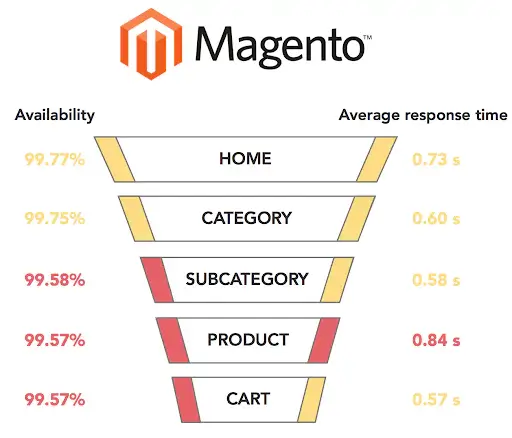
Meanwhile, the analysis of OpenCart sites’ performance showed disappointing results.
OpenCart is one of the slowest platforms with an average load time of 831 milliseconds. It is 1.6 times higher than the ideal speed Google recommends for SEO and is 1.25 times higher than that of Magento.

OpenCart category pages load even more slowly with an average response time of 936 milliseconds.
Cost/Pricing
Magento
Magento offers two major variants at different prices. For Magento Community Edition, the pricing situation is similar to that of OpenCart: free for entry, but need to spend on hosting, extensions, maintenance, etc. On the other hand, Magento Enterprise Edition comes with a price tag of $22,000+ annually, and it can go up to hundreds of thousands depending on the size and needs of your business.
OpenCart
Technically, the price of OpenCart is free. But that doesn’t mean you can operate your platform free of any charges sustainably. Sooner or later, you’ll need to upgrade your system with new features from modules, which can go as high as $300. Especially for starters, you need to budget a significant amount for basic expenses including web hosting, a domain name, and an SSL certificate.
Features & Extensions
The main major difference between OpenCart vs Magento is rooted in their features and extensions. Let’s take a look at the basic features of OpenCart vs Magento:
| OpenCart | Magento |
|---|---|
| User Management Multi-Store Options and attributes for products and categories Discounts, coupons, and specials Back-ups and restorations Affiliates Unlimited Categories & Products Multi-lingual, multi-currency, and shipping methods | Marketing, promotions, and conversion tools Search Engine Optimization Site management Catalog management Catalog & Product browsing Checkout, payment, and shipping Order management Analytics and Reporting Mobile commerce Customer accounts and service International support |
OpenCart is a lightweight eCommerce solution that comes with all the basic features you need to get started with your online store. Magento, on the other hand, is a more comprehensive eCommerce platform that offers a wide range of advanced features and options.
Security
Magento
Magento is certainly a platform of high security.
One of the priorities of Magento is ensuring the security of customers’ data and digital experiences.
In 2015, Magento Security Patches were released to keep your online store always on top of security and your customers feel secure when shopping from your store. A patch is a change of code that fixes a certain vulnerability and is regularly automatically updated for better site performance.
When Magento releases updates for Magento Open Source editions, store owners can check information on security updates available for their edition. They can then know about the vulnerabilities as well as the updates to solve them.
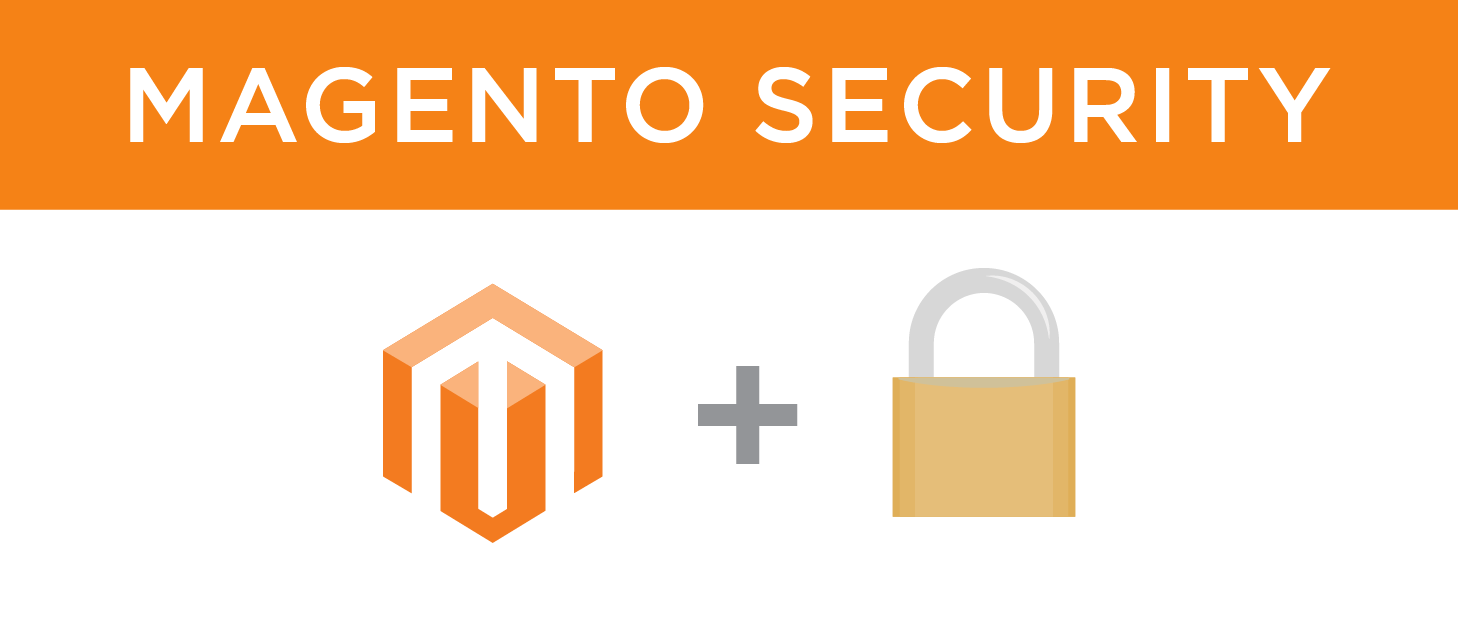
Besides, Magento is making Content Security Policy (CSP) available for Magento Open Source. CSP provides a standardized set of directives that can confine browser content to allow only whitelisted resources to appear. It helps the browser to determine whether content resources are credible.
Magento users can also use third-party tools such as Mage Scan or MageReport. They will help you to check your online store for security vulnerabilities in Magento as well as some commonly used 3rd party extensions.
Furthermore, you can also take advantage of the Magento Security Guide which provides you with useful self-help materials to keep your customers’ data safe.
OpenCart
OpenCart does not take responsibility for securing your website although it is easy for hackers to detect the vulnerabilities and attack OpenCart websites. The reason for these vulnerabilities is that OpenCart internal code is public. To avoid these threats, OpenCart just offers its users some suggestions aiming to protect their sites after they install OpenCart or let their stores go live.
Another OpenCart security weakness is that third-party extensions can have bad effects on security issues. They might contain potential vulnerabilities that let attackers make changes to already existing open-source plugins to compromise your sites installing them.
SEO and Marketing tools
Magento
Magento is considered one of the best eCommerce solutions for search engine optimization (SEO).
With Magento, SEO is automatically configured. This cart provides its users with many outstanding features to help merchants improve their site ranking and attract more traffic.
- SEO best practices: Magento includes many features to support SEO including Metadata, Sitemap, and URLs Rewrites.
- Catalog Navigation: optimizing the methods shoppers move from page to page through a store to provide easy access to the products in your catalog.
- Catalog Search: configuring catalog to improve search results.
- Search Terms: improving the effectiveness of customers by leveraging search terms.
Magento allows store owners to fully customize their stores’ design and SEO functionality to make it easier for search engines to crawl your online store and understand its structure. For instance, users can easily set ideal meta-titles, keywords, and descriptions for products, categories, and CMS page keywords.
For Marketing tools, Magento offers store owners Marketing Menu, which provides access tools for managing Promotions, Communications, SEO, and User-generated content. Another strong point of Magento’s Marketing is integrating with the following Google tools: Google Analytics, Google Privacy Setting, Google Content Experiments, Google Tag Manager, and Google Adwords. With these powerful tools, you can optimize the content, analyze your traffic as well as connect your catalog to shopping aggregators and marketplaces.
Besides all that, store owners can make use of more than 800 Marketing extensions including Advertising, CRM, Email, Marketing Automation, and SEO/SEM on Magento Marketplace. For instance, you can take advantage of these Email Marketing extensions to automate your Magento Marketing campaigns to skyrocket your sales.
OpenCart
It is disappointing to say that one of the disadvantages of OpenCart is its SEO features. OpenCart just offers a basic set of SEO features and it is not as search engine friendly as it could be. Although there are different extensions that can help, it does not even come close to the endless possibilities that Magento offers, such as optimized titles, images, URLs, etc.
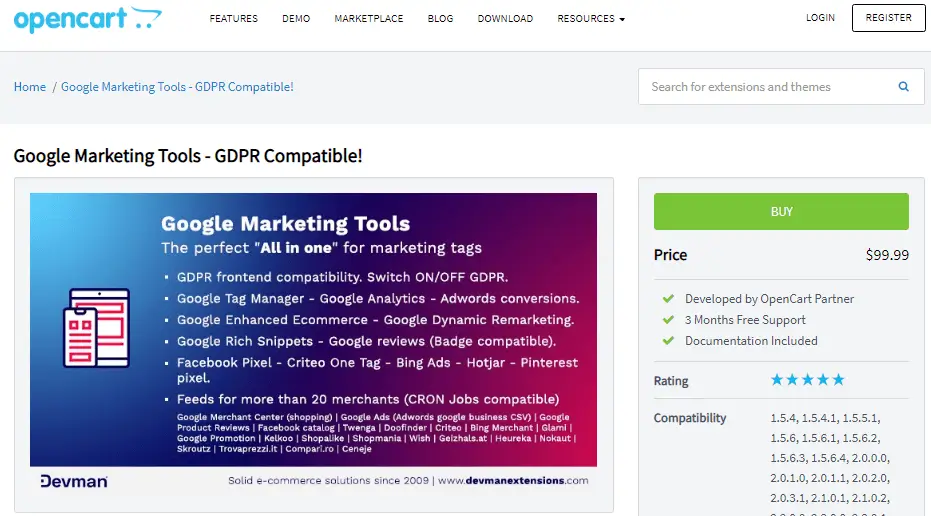
About Marketing tools, OpenCart store owners can access the dashboard to go to the Marketing field. There are submenus such as Marketing, Affiliates, Coupons, and Mail. This platform also offers Google Marketing Tools – GDPR compatible which includes Google Analytics, Google Tag Manager, Google rich snippets, etc. However, you need to pay additional costs to use this service.
Ease of Use
Ease of use is often a decisive factor when choosing an eCommerce platform. If you are not a tech-savvy person, you don’t want coding skills to prevent you from building and launching your own site. However, at the same time, you should consider the performance of your platform and whether it will be able to scale as your business grows.
Magento
When comparing Magento vs OpenCart, Magento is a bit more complicated to use. This platform is robust and heavily laden that not suitable for those who are not familiar with codes. However, if you are willing to put in the time to learn how to use it, Magento can offer a much broader view of your store operations and great features that OpenCart doesn’t have.
OpenCart
Opencart is a good choice for those who are looking for an easy-to-use platform. As long as you set up an OpenCart store, you can immediately start working on it without any hassle. OpenCart offers a very intuitive interface and a simple installation process.
Store Management
Magento
The Magento Admin panel is rich in-store information. Store owners can view critical store analytics such as overall sales level, the average order amount, and so on. What’s more, with Magento, merchants can adjust store sections directly from the Dashboard.
Moreover, Magento Catalog Management is considerably developed. It provides easy access to product creation, category, and inventory management tools, as well as shared catalogs for custom pricing in B2B stores. You have the ability to add unlimited products and categories, without any restricted attributes.
Shifting to Magento Order Management, you will have the ability to process orders.
- View and edit order.
- Review the following sections: Order and Account Information, Address Information, Payment & Shipping method.
- Review Items ordered including the item ordered, notes for this order, and order totals.
Besides, you can also create invoices and shipments, issue credit memos, and set up billing agreements.
OpenCart
From the Admin Panel, OpenCart users can track order statistics, and edit customer information, products, and various store sections.
OpenCart Catalog Management contains some control functions. Besides the ability to add unlimited products and categories, store owners can also make use of Filter to crawl through the inventory.
Come to OpenCart Order Management, which gives you the ability to view all of the order details made on their site, manually add orders, edit the details of existing orders, and print invoices.
There are sections where you can manually modify orders: Customer details, Payment details, Shipping details, Products, Vouchers, and Totals.
Community Support
Over time, the Magento community has expanded to include 450,000 members, many of whom are developers who are willing to offer their technical expertise. An extensive online community will be of great value to you if you are technologically adept and can pick and choose the answers you want…
Like Magento, OpenCart offers a Community Forum where individuals can exchange their expertise and experiences in running online companies. There are about 120,000 members of the community, which is equivalent to that of Magento. You may also buy specialized support services, which start at $99/site/month and increase in price as your needs grow.
OpenCart vs Magento: What is the Better choice?
Both Magento and OpenCart are great eCommerce platforms. Choosing the winner between Magento vs OpenCart is highly dependent on your business’s specific needs and requirements. Here are some criteria you can use to make an informed decision:
Business size and scale
Bear in mind that Magento is a complex and expensive platform, making it an excellent choice for bigger businesses with higher expenditures. Therefore, if you own a large eCommerce store that serves wide product ranges, or have needs for further scalability and expansion in the future, Magento should be a more suitable solution for you to most utilize its extensive features.
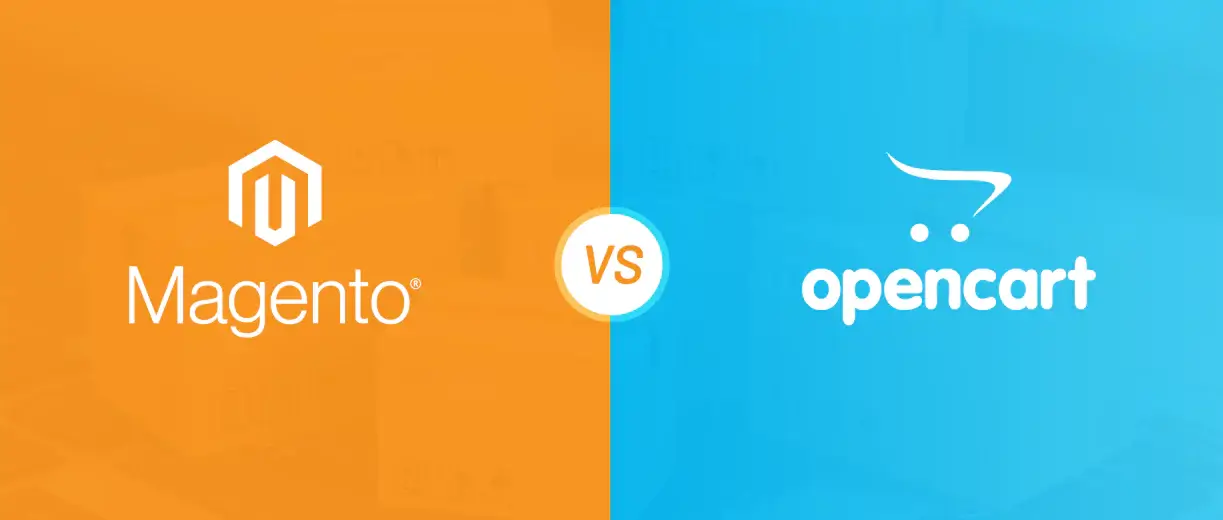
On the other hand, OpenCart is suitable for small to medium-sized businesses with moderate product catalogs and traffic. If your businesses belong to this case, OpenCart will be the choice for you. However, keep in mind that your company may outgrow the platform in the future.
Technical expertise
The requirement for technical expertise is a critical differentiating factor between Magento vs OpenCart, making it another important criterion for businesses to consider when choosing between these two platforms.
Magento’s complexity is the platform’s renowned limitation. With its steep learning curve, Magento demands a high level of technical proficiency, making it more suitable for businesses with technical resources or a development team. If your businesses don’t have this strong technical resource, spending an amount of budget for hiring external support is necessary. In this case, you have to make sure that your businesses have enough financial capabilities for this service.
On the contrary, OpenCart requires less technical expertise for setup and management, making it ideal for non-technical users. This is a better solution for building your shop from the ground up due to it being a straightforward and easy-to-use platform.
Available budget
Magento vs OpenCart differences also spark in the budget required for these platforms. You should carefully consider your business’s financial capabilities as well as the available budget. While OpenCart is generally a more budget-friendly option, Magento is more expensive for both development and maintenance expenses, especially for the Enterprise edition. Moreover, you may need to pay for extra expenses to build Magento sites such as external technical support, third-party integrations, and so on.
Customization and scalability need
Each platform has varying levels of customization and scalability. Determining your company’s need for website customization is also an important deciding factor.
OpenCart and Magento are both open-source e-commerce platforms, so they both offer extensive customization options. However, OpenCart may have fewer advanced and pre-configured features than Magento. This platform also has limitations when it comes to managing large-scale stores. Therefore, OpenCart is not the optimal solution if your businesses planning for significant growth.
Magento is widely recognized for its extensive customization capabilities and scalability. If you have identified your long-term business goals with further expansion, you can ensure that Magento meets all of your customization requirements and is able to handle your growing traffic and product catalogs without difficulty.
In conclusion,
In this article, we’ve highlighted some of the best features of two of the most popular eCommerce systems, Opencart vs Magento. Hopefully, it can help you find out a suitable platform for your business. If you want to learn more about each platform or get started on building an online store quickly and easily. Feel free to contact us now!




